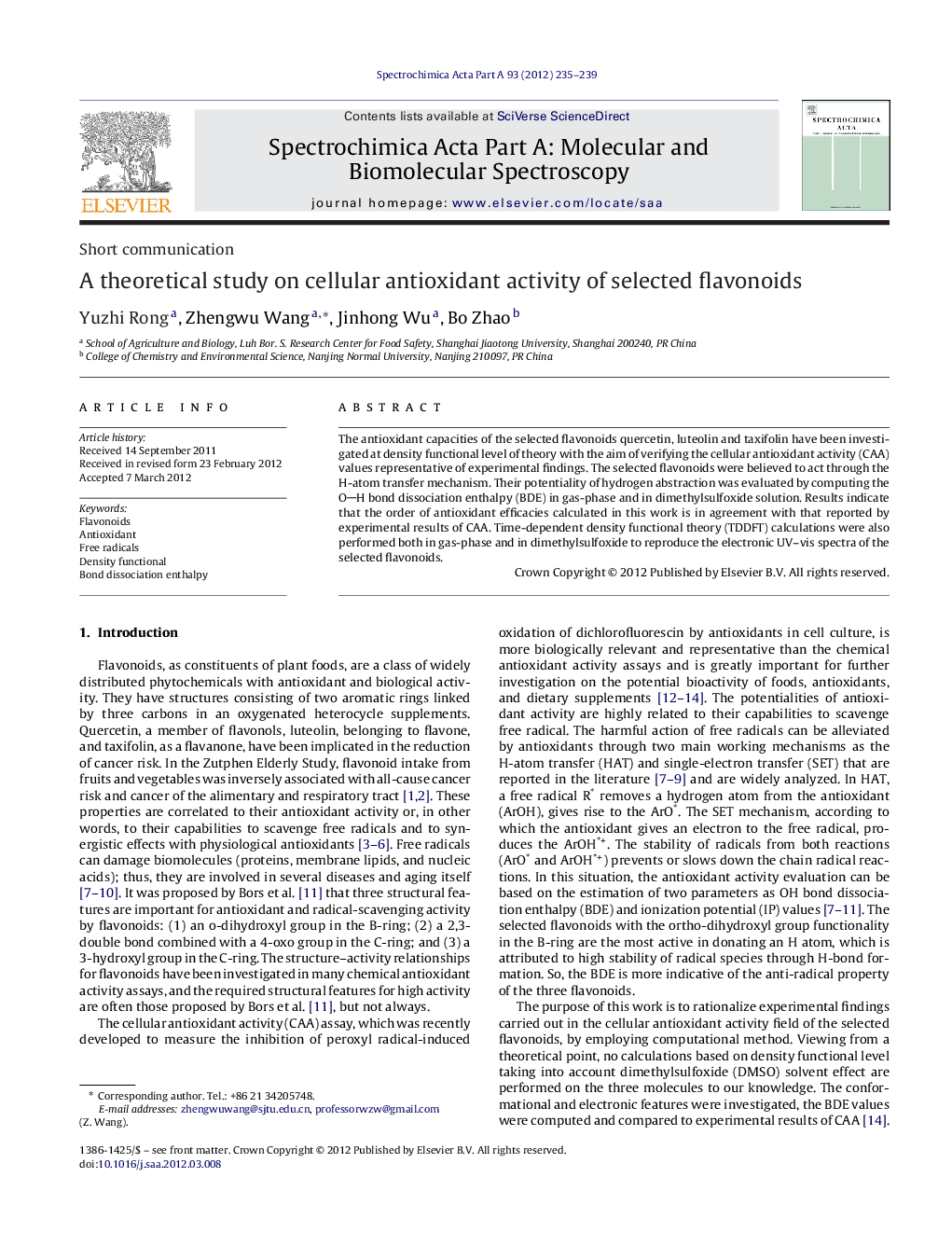| Article ID | Journal | Published Year | Pages | File Type |
|---|---|---|---|---|
| 1232783 | Spectrochimica Acta Part A: Molecular and Biomolecular Spectroscopy | 2012 | 5 Pages |
The antioxidant capacities of the selected flavonoids quercetin, luteolin and taxifolin have been investigated at density functional level of theory with the aim of verifying the cellular antioxidant activity (CAA) values representative of experimental findings. The selected flavonoids were believed to act through the H-atom transfer mechanism. Their potentiality of hydrogen abstraction was evaluated by computing the OH bond dissociation enthalpy (BDE) in gas-phase and in dimethylsulfoxide solution. Results indicate that the order of antioxidant efficacies calculated in this work is in agreement with that reported by experimental results of CAA. Time-dependent density functional theory (TDDFT) calculations were also performed both in gas-phase and in dimethylsulfoxide to reproduce the electronic UV–vis spectra of the selected flavonoids.
Graphical abstractFigure optionsDownload full-size imageDownload as PowerPoint slideHighlights► The cellular antioxidant activity is investigated at density functional level of theory. ► The OH bond dissociation enthalpy is calculated to predict efficacies of anti-radical property. ► The order of antioxidant efficacies predicted theoretically is in agreement with that reported by experimental results of CAA. ► H-atom transfer seems to be the best indicator of anti-radical property of the three flavonoids. ► Cellular antioxidant activity values are more representative of experimental findings. ► Time-dependent density functional theory methodologies reproduce well the shape of the experimental UV–vis spectra.
